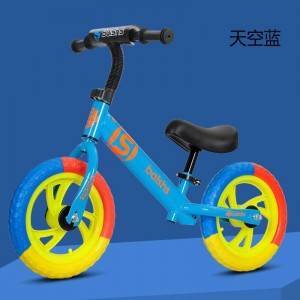Aug . 09, 2024 19:35 Back to list
Explore the Latest Prices and Models of Kids Balance Bikes for Young Riders
The Rising Popularity of Kids' Balance Bikes A Look into Pricing Trends
In recent years, the popularity of kids' balance bikes has surged, and for good reason. These innovative two-wheeled vehicles have become a staple for toddlers and young children, serving not only as a fun means of transportation but also as an essential tool for developing balance and coordination skills. As the demand for these bikes continues to grow, understanding the pricing landscape is crucial for parents looking to make informed purchasing decisions.
What Are Balance Bikes?
Balance bikes, also known as strider bikes, are designed for children aged 18 months to five years. Unlike traditional bicycles, balance bikes do not have pedals. Instead, young riders propel themselves by walking, running, and gliding on two wheels. This design encourages a natural learning process, allowing children to focus on balancing and steering without the added complexity of pedaling. Many experts and parents alike praise balance bikes for building confidence and preparing children for traditional biking later on.
Pricing Overview
When it comes to purchasing a balance bike, the price can vary significantly based on several factors brand, materials, features, and even where the bike is sold. Generally, parents can expect to see prices ranging from around $50 to over $300. Here’s a breakdown of what influences these price points
1. Materials Balance bikes can be made from a variety of materials, with wood and metal being the most common. Wooden balance bikes tend to be more affordable, often priced between $50 and $100. However, metal balance bikes, which are typically more durable and lightweight, can range from $100 to $300 or more.
2. Brand Well-known brands with a strong reputation for quality and safety often command higher prices. Popular brands such as Strider, Woom, and Puky may have models that exceed $200. Conversely, lesser-known brands may offer budget-friendly options without sacrificing safety.
kids balance bike pricelist

3. Features Some balance bikes come equipped with additional features, such as adjustable seats, air-filled tires, or innovative safety elements like steering limiters. These enhancements can increase the price, making premium models generally more expensive.
4. Retailer Prices can also vary depending on where you choose to shop. Major retailers may offer sales and discounts, while specialized bike shops might have higher price points due to their expert service and personalized fitting.
What to Consider When Buying
When selecting a balance bike for your child, cost should not be the sole factor. Safety, comfort, and the bike’s overall quality are paramount. It’s essential that parents choose a bike that fits their child well; a proper fit helps ensure safety and enhances the learning experience. Besides, many reputable brands offer warranties and return policies, providing peace of mind for buyers.
Additionally, consider the bike's resale value. Many balance bikes hold their value well, especially models from respected brands. This can be an important consideration for parents who prefer to buy second-hand or plan to sell the bike once their child outgrows it.
Conclusion
The trend of children learning to ride on balance bikes is without a doubt influencing the way parents approach purchasing bicycles for their little ones. As you explore the pricing landscape, remember that investing in a quality balance bike can yield long-term benefits in your child's physical development and confidence. Considering all factors—material, brand, features, and fit—will help you find the perfect balance bike that meets both your budget and your child’s needs. Whether it’s a first bike or a stepping stone to riding a traditional bike, balance bikes offer a unique blend of fun and learning that can last a lifetime.
-
Aluminum Alloy Outdoor Running Bike for Kids-Hebei Gorgeous Bike Co., Ltd.|Durable Lightweight Design&Balance Training System
NewsAug.18,2025
-
Wholesale Aluminum Alloy Bike for Kids - Hebei Gorgeous Bike | Durable, Lightweight, Safe
NewsAug.18,2025
-
Classic Wooden Tricycle for Kids: Safe, Sturdy & Two-Seater Options
NewsAug.18,2025
-
Aluminum Alloy Balance Bike-Hebei Gorgeous Bike Co., Ltd.|Durable Kids Tricycles&Wholesale
NewsAug.17,2025
-
Aluminum Alloy Kids Bike-Hebei Gorgeous Bike|Safety,Durability
NewsAug.17,2025
-
Aluminum Alloy Balance Bike for Kids-Hebei Gorgeous Bike Co., Ltd.|Durable, Safe, Affordable
NewsAug.17,2025
